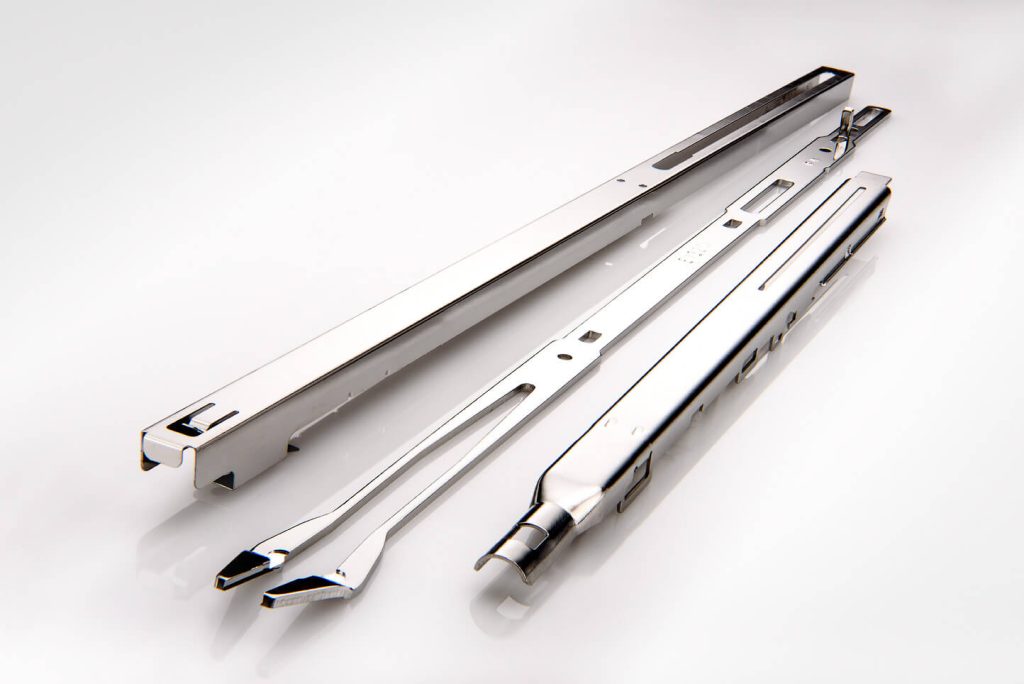Understanding the importance of regulatory requirements in the passivation of medical devices and parts
In the intricate landscape of medical device manufacturing, compliance with regulatory standards is not merely a recommendation—it’s an imperative. Passivation, a critical process in ensuring the integrity and longevity of medical devices, is deeply intertwined with a web of regulatory frameworks and industry standards, including ISO 9001, ISO 13485, ASTM B912, and ASTM A967.

Regulatory Standards and Compliance: Organizations like the FDA and international bodies such as ISO establish rigorous standards to ensure the safety, efficacy, and quality of medical devices. ISO 9001 sets the foundation for quality management systems, emphasizing a systematic approach to meeting customer requirements and continuous improvement. ISO 13485 specifically addresses the unique requirements of medical device manufacturing, emphasizing risk management, traceability, and regulatory compliance throughout the product lifecycle.
Industry Best Practices: Passivation is widely recognized as a cornerstone of best practices in medical device manufacturing, particularly for stainless steel components. ASTM B912 provides a comprehensive guide for passivation methods and procedures, outlining techniques for various stainless steel alloys and surface conditions. ASTM A967 further addresses the selection and application of passivation treatments, ensuring consistency and effectiveness across different manufacturing processes.
Benefits of Passivation: Passivation offers a multitude of benefits for medical devices, chief among them being corrosion prevention. By removing free iron and contaminants from metal surfaces, passivation creates a protective oxide layer that enhances corrosion resistance, ensuring the reliability and performance of devices over their lifespan. Additionally, passivation plays a critical role in maintaining the biocompatibility of medical devices, mitigating the risk of adverse reactions and ensuring compatibility with biological systems.
Ensuring Compliance and Quality Assurance: For medical device manufacturers, compliance with regulatory standards and adherence to industry best practices are non-negotiable. Passivation is an essential component of this compliance framework, and partnering with experienced passivation specialists is essential to ensure that devices meet all necessary requirements. By aligning with ISO 9001 and ISO 13485 standards and adhering to ASTM B912 and ASTM A967 guidelines, manufacturers can uphold the highest levels of quality, reliability, and regulatory compliance in their products.
In conclusion, understanding the critical importance of passivation for medical devices requires a comprehensive grasp of regulatory standards, industry best practices, and technical specifications. By integrating passivation into their manufacturing processes and collaborating with trusted partners like New England Electropolishing, medical device manufacturers can navigate the complex regulatory landscape with confidence, ensuring the safety, efficacy, and quality of their products.
Electropolishing Resources

What is Electropolishing?
Electropolishing is an electrochemical and reverse plating process that removes the outer layer of skin on a metal...

The Electropolishing Process
The electropolishing process is initiated by immersing a metal part into a temperature-controlled bath of electrolyte...

Benefits of Electropolishing
Curious about the benefits of putting your parts through the electropolishing process? Read along below where we...

How Much Material Does Electropolishing Remove?
Electropolishing, when done properly is a highly controllable process which removes as little as...

How Much Will Electropolishing Improve the Surface Finish of My Part?
Ra and RMS are both representations of surface roughness. Ra is calculated as the roughness average of a surface’s...

Electropolishing Frequently Asked Questions
Learn the difference between electropolishing and electroplating as well as how the electropolishing process works...

What is ASTM B912?
ASTM B912 is an industry standard for the passivation of stainless steel alloys through electropolishing...

What is ASTM A967?
ASTM A967 is an industry standard specification for the chemical passivation treatments for stainless...

What is ISO 13485?
ISO 13485 is a standard that applies specifically to medical devices. ISO 13485 is designed to be...
